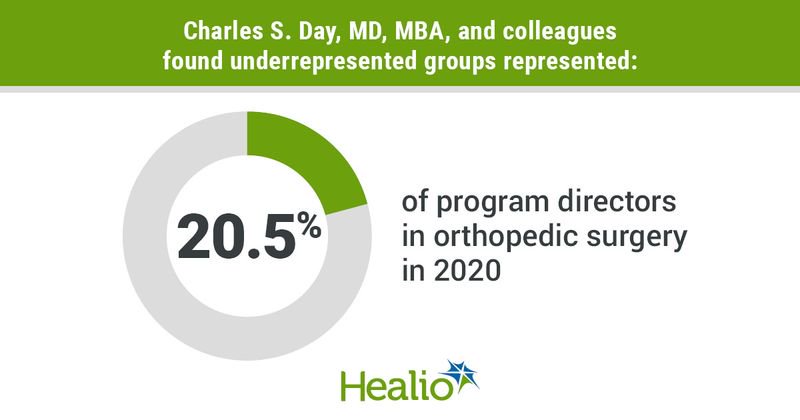Study: Diversity in orthopedic leadership made minimal progress from 2007 to 2019
Although diversity in orthopedic surgery leadership has improved in some key areas, published results showed a decrease in representation of gender and underrepresented groups between orthopedic faculty and orthopedic leadership.
“While numerous other articles have discussed the lack of racial and gender diversity in our field at the resident/faculty level, this is the first article to discuss the further narrowing of current minority chairs of orthopedic surgery nationally as compared to the current minority orthopedic faculty representation,” Charles S. Day, MD, MBA, interim medical director and chair and professor of orthopedic surgery in the department of orthopedic surgery and service line at Wayne State University School of Medicine, Henry Ford Health, told Healio. “There has been no significant improvement in minority orthopedic chairs from 2007 to 2020 despite significant focus on this issue from both the American Academy of Orthopaedic Surgeons and American Orthopaedic Association leadership in this millennium.”

Day and colleagues collected demographic data from JAMA and the Association of American Medical Colleges and utilized aggregate data to determine the racial, ethnic and gender composition of academic leadership for eight surgical and nonsurgical specialties in 2007 and 2019. Researchers conducted a comparative analysis to identify changes in diversity among chairpersons between the 2 years. Researchers also compared current levels of diversity in orthopedic leadership with those of other specialties.

Compared with nonsurgical specialties, results showed orthopedic surgery had a significantly lower representation of underrepresented groups among program directors at 20.5% in 2020. Researchers also found that, with the exception of neurological surgery, orthopedic surgery had the lowest proportion of female program directors overall at 9%. Although orthopedic surgery had no change in representation of underrepresented groups among chairpersons from 2007 to 2019, researchers noted orthopedic surgery had a significant increase in female representation among chairpersons from 0% to 4.1%. When comparing the diversity of 2019 orthopedic faculty to orthopedic leadership in 2019/2020, researchers observed a significant decrease in representation of underrepresented groups and women.
“When compared to neurosurgery, [otolaryngology], surgery, OB/GYN, family medicine, internal medicine and pediatrics, orthopedics has the smallest representation of minority chairs,” Day said. “When comparing women chairs, orthopedics is similar to neurosurgery, [otolaryngology] and surgery. Perhaps the most important finding is that across all eight subspecialties analyzed, there was a similar decrease in minority chairs as compared to minority faculty representations in those fields. This suggests that the decrease in minority leadership from faculty representation may be a more pervasive issue across all of academic medicine.”



